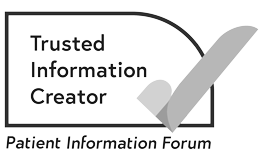Multidisciplinary team (MDT) for blood cancers
What is a multidisciplinary team (MDT)?
Before treatment for a blood cancer, a team of health professionals work together to plan the treatment that is best for you. This team is called a multidisciplinary team or MDT.
The MDT look at national treatment guidelines or the latest evidence for the type of cancer you have. If you have any treatment preferences, your doctor will tell them about this.
Blood cancers include:
- leukaemia (sometimes spelt as leukemia)
- lymphoma
- myeloma
- myelodysplasia (MDS)
- essential thrombocythaemia (ET)
- polycythaemia vera (PV)
- myelofibrosis (MF).
Related pages
Who will be in my MDT?
Your MDT usually includes the following professionals:
- Haematologist (or Haemato-Oncologist) – a doctor who diagnoses and treats blood disorders and cancers.
- Radiologist – a doctor who looks at scans and x-rays to diagnose health problems.
- Clinical nurse specialist (CNS) – a nurse who gives information about cancer, and support during treatment.
- Pathologist – a doctor who looks at cells or body tissue under a microscope to diagnose cancer.
Depending on the support and treatment you need, the team may also include other specialists, such as:
- Oncologist – a doctor who treats people who have cancer.
- Transplant consultant – an expert in managing and arranging stem cell transplants.
- Teenager and young adult (TYA) specialist nurse.
- Palliative care doctor or nurse – specialists who help with symptom control.
- Orthopaedic surgeon – a doctor who specialises in bones and joints.
- Pharmacist
- Dietitian
- Physiotherapist
- Occupational therapist
- Clinical trials nurse
- Psychologist
- Counsellor
- Social worker.
After your MDT meeting
After the team has met, your specialist will discuss your treatment options with you. You can ask questions about anything you do not understand or are worried about.
You should also be given a telephone number for your specialist nurse or key worker who you can contact if you have any questions when you get home.
About our information
This information has been written, revised and edited by Macmillan Cancer Support’s Cancer Information Development team. It has been reviewed by expert medical and health professionals and people living with cancer.
-
References
Below is a sample of the sources used in our lymphoma information. If you would like more information about the sources we use, please contact us at informationproductionteam@macmillan.org.uk
Follows GA, Barrington SF, et al. Guideline for the first-line management of Classical Hodgkin Lymphoma — A British Society for Haematology guideline. Br J Haematol, 2022; 197, 558– 572. [accessed April 2024].
Fox CP, Chaganti S, McIlroy G, et al. The management of newly diagnosed large B-cell lymphoma: A British Society for Haematology Guideline. Br J Haematol. 2024; 204(4):1178–92. [accessed April 2024].
McKay P, Fielding P, et al. Guidelines for the investigation and management of nodular lymphocyte predominant Hodgkin lymphoma. Br J Haematol, 2015; 172, 32-43. [accessed April 2024].
McNamara C, Montoto S, et al. The investigation and management of follicular lymphoma. Br J Haematol, 2020; 191, 363-381. [accessed April 2024].
National Institute for Health and Care Excellence. Non-Hodgkin’s lymphoma: diagnosis and management. NICE guideline [NG52]. Published: 20 July 2016. Last update Oct 2021. [accessed April 2024].
Date reviewed

Our cancer information meets the PIF TICK quality mark.
This means it is easy to use, up-to-date and based on the latest evidence. Learn more about how we produce our information.
The language we use
We want everyone affected by cancer to feel our information is written for them.
We want our information to be as clear as possible. To do this, we try to:
- use plain English
- explain medical words
- use short sentences
- use illustrations to explain text
- structure the information clearly
- make sure important points are clear.
We use gender-inclusive language and talk to our readers as ‘you’ so that everyone feels included. Where clinically necessary we use the terms ‘men’ and ‘women’ or ‘male’ and ‘female’. For example, we do so when talking about parts of the body or mentioning statistics or research about who is affected.
You can read more about how we produce our information here.




